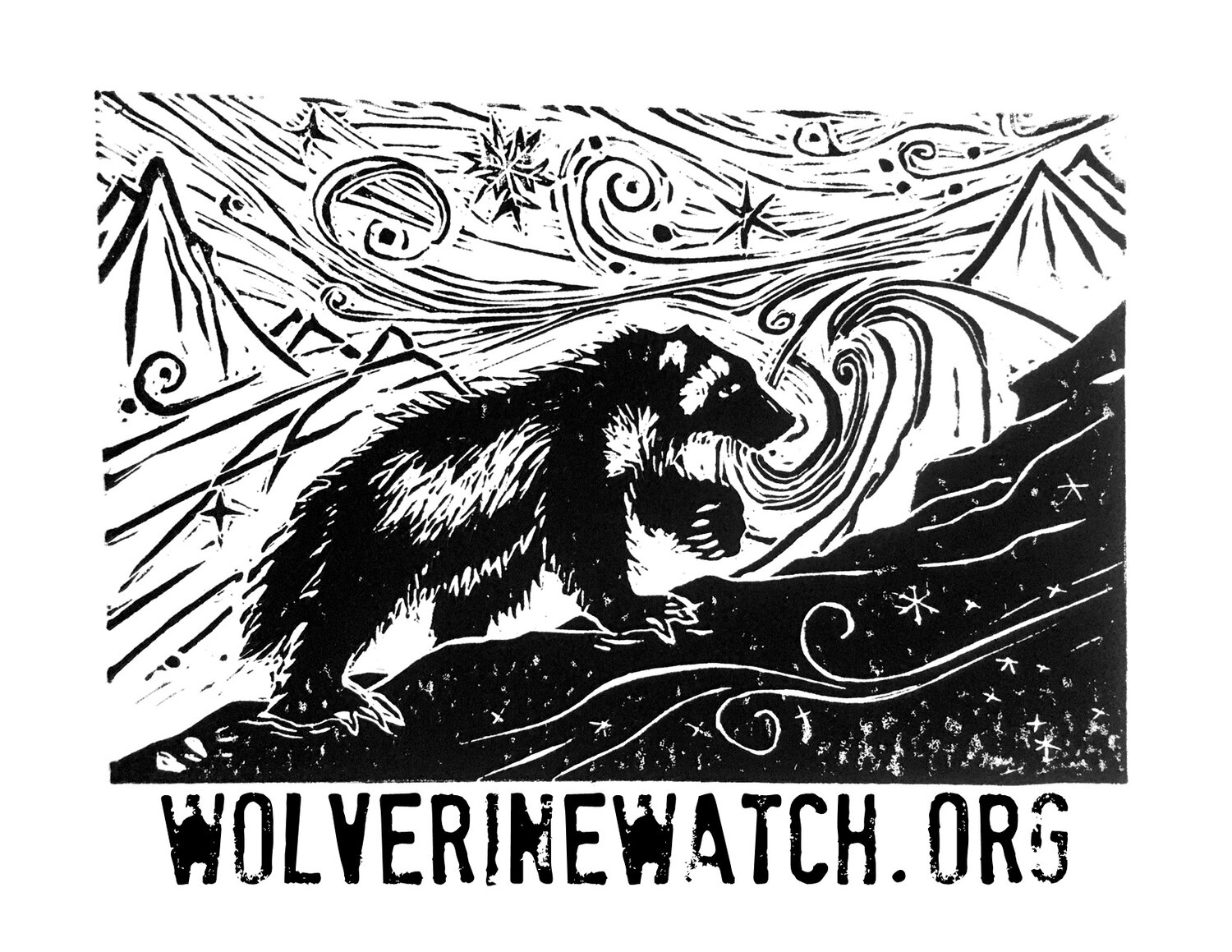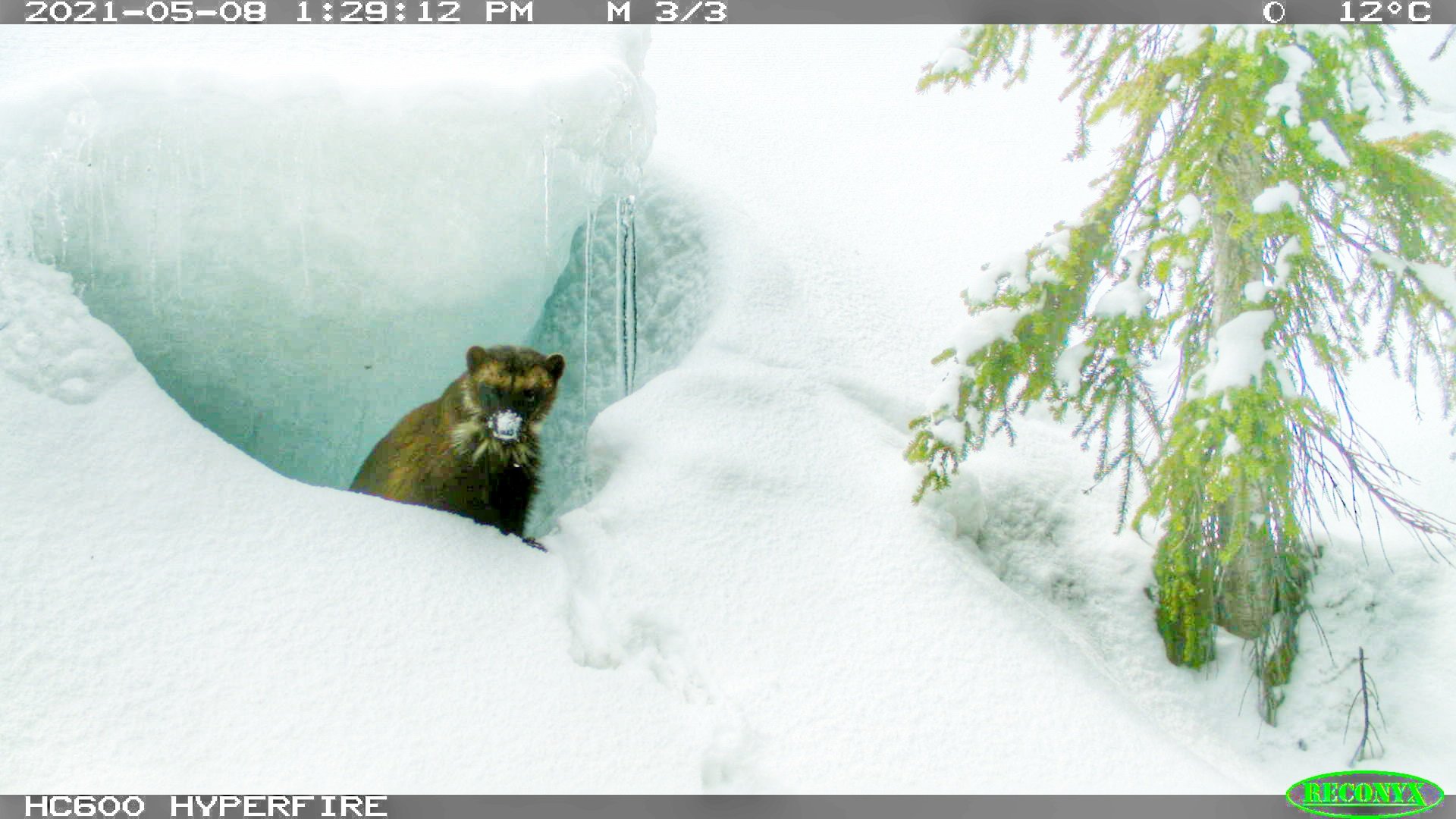How to identify wolverine dens
PLEASE DO NOT ATTEMPT TO FIND DENS TO PHOTOGRAPH KITS. THE FEMALE WILL LIKELY ABANDON THE DEN IF DISTURBED. YOU MIGHT PUT HER BABIES AND FUTURE REPRODUCTION AT RISK, CONTRIBUTING TO THE FURTHER DECLINE OF WOLVERINES.
What is a wolverine den? Females give birth to and raise their young (called kits) in dens between January and May.
Wolverine dens are often “holes in the snow” that lead to snow tunnels and caves, to large boulders, fallen trees or even wood piles or beaver lodges!
Dens have wolverine tracks leading in and out (unless it just snowed 3 feet).
Wolverines make holes in the snow for other reasons, too - for example to sleep, cache food, recover from injury. That’s why we investigate potential den sites to confirm it’s a reproductive den.
In the mountains, dens are often found near and below tree line, and near avalanche paths.
Female wolverines are sensitive to disturbance by people at their dens.
Females might move their babies if they no longer feel safe at the den, which is a risk to the babies’ survival.
The den keeps the baby wolverines warm and safe from predators.
Females re-use good denning locations over many years.
Wolverines don’t like scientists at their dens either, that’s why we use drones and strict protocols, and generally put remote cameras up after the denning season.
Most females take a year or two off between successive litters!
Is it dangerous to go close to a den? Don’t go close to a den. An upset female might defend her young.
We collect observations of potential wolverine den sites as part of the Dens & Drones project.
Crave more wolverine den science? Go to wolverinefoundation.org/denning
Den Example #1 - in a boulder field
This den was first reported to us in 2020.
We confirmed it’s an active den with a drone and put up a remote camera after the denning season.
The female took a break from reproduction in 2021.
In 2022 the female’s den was 1.25 km away but she used this old den site for three days in April (that’s when the below remote photos were taken) with her two kits.
There are two large boulders that have den entrances and exits.
The third photo is from a drone! You have to look carefully on the bottom left hand corner to see the tracks and the hole entering the boulder.
Den Example #2 - near an avalanche path
This den has been used for many years prior to our study.
We collected drone and remote camera evidence that the female reproduced in 2018/2019, 2019/2020, 2020/2021, and 2021/2022.
We keep recapturing (with photos) the same pair of adults at this location over the winter.
The many consecutive winters with reproduction suggest that this den is located in excellent wolverine habitat.
Females can breed every year, but only if they have plenty of food resources and are in prime condition.
This is therefore likely a den site of big importance for the population - and we are helping land managers put protections in place.
Den Example #3 - in the forest
Wolverine dens may also be found in forests.
The photos below are entrances to confirmed reproductive dens.
It can require quite a bit of effort to distinguish between temporary snow holes and reproductive dens!









Den Example #4 - THESE ARE PORCUPINE DENS
Porcupine dens look very similar to wolverine dens, especially from the air.
Porcupine tracks look different from wolverine tracks: check the track page.
Porcupine sometimes have their winter dens in boulder fields, just like wolverines.
Surprisingly (to us), we’ve seen several porcupine snow dens at and near treeline - see the images below.
A porcupine den at treeline. The tracks lead to a hole in the snow at a boulder.
Porcupine tracks leading to a hole in the snow (hole just outside photo frame). This porcupine den was mistaken for a wolverine den.
Porcupine den in the snow at treeline. It was initially mistaken for a wolverine den.







